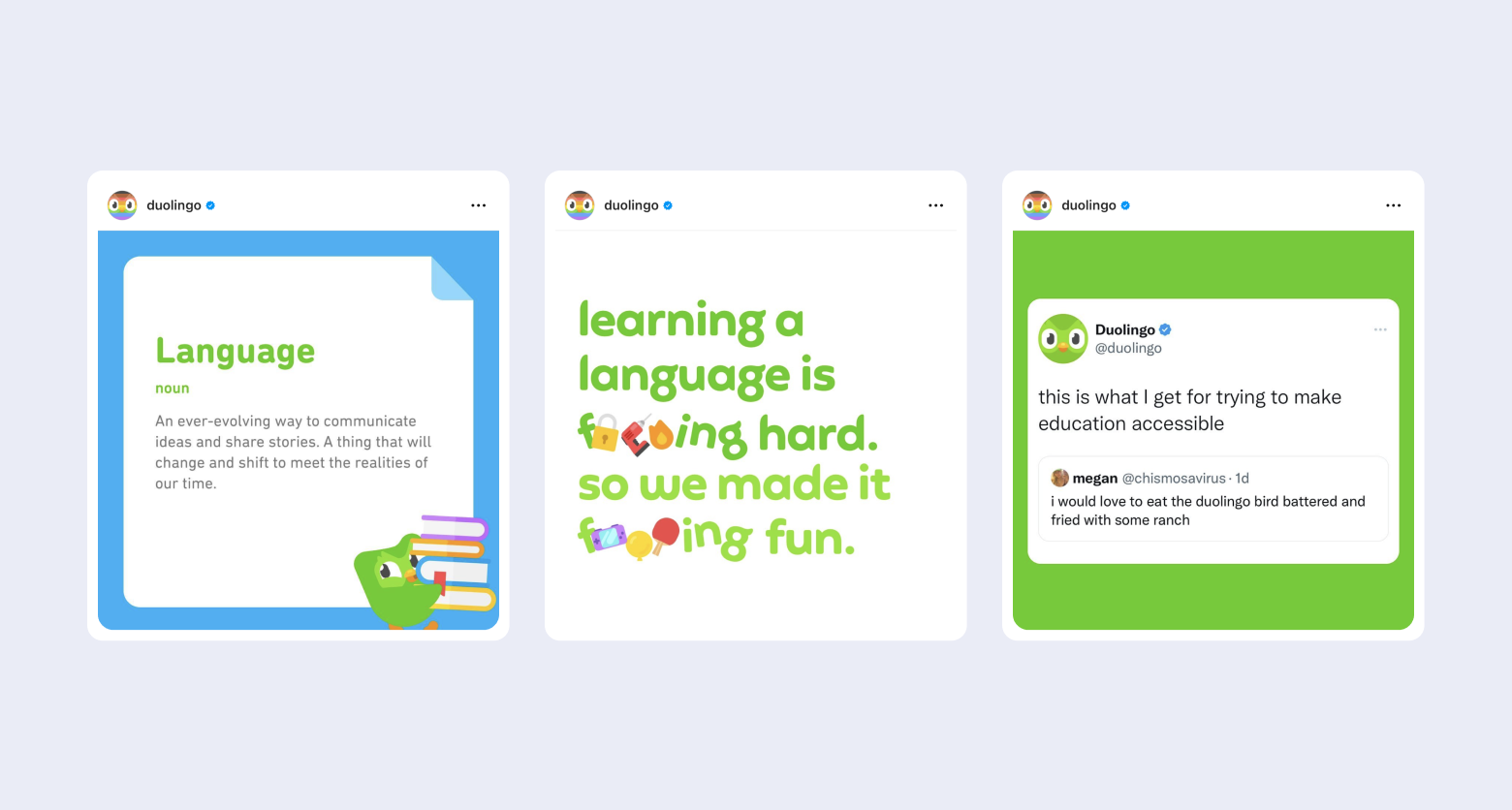
Your guide to brand communication (plus strategies & examples)
Is your brand struggling to break through the noise? You’re not alone. Every day, countless businesses are vying for consumers’ attention, making it increasingly challenging to stand out in a crowd. Those who succeed have one thing in common: effective brand communication.
In today’s hyper-connected world, brand communication is a vital tool that allows businesses to establish a strong emotional bond with their customers. By harnessing the power of strategic messaging, compelling storytelling, and seamless omnichannel brand experiences, you can captivate your target audience and leave a lasting imprint in their minds.
What is brand communication?
Brand communication is a strategic approach that focuses on expressing a company's identity, values, and messages to establish a consistent narrative that resonates with its target audience.
This long-term strategy extends beyond mere promotional campaigns and advertising to embody the essence, purpose, and unique market positioning of the brand.
By fostering internal harmony and understanding about the brand’s core message, a strong brand communication strategy ensures that all organizational members can effectively convey this message, enhancing brand consistency, clarifying external communication efforts, and ultimately strengthening the brand's presence."
How to start a brand communication plan
A brand communication plan is a roadmap to guide your efforts in conveying your brand’s message. While each company creates its plan based on its unique needs and objectives, several key activities are usually included:
- Identifying and researching your target audience and competitors
- Establishing your messaging
- Developing a brand identity toolkit and style guide
- Choosing appropriate channels and touchpoints
- Establishing metrics and evaluation
A comprehensive plan allows brands to streamline and organize their communication, enabling stakeholders to share consistent messages and imagery on any channel.

5 steps for developing a brand communication strategy
To effectively communicate your brand and achieve your marketing goals, it’s crucial to have a well-defined strategy in place. This section outlines five key steps to develop a strong and impactful brand communication strategy.
1. Determine your brand communication objectives
Setting clear communication objectives is the foundation of a successful strategy. By defining your specific goals, you can create a more effective plan to achieve them.
Start by reflecting on your business and marketing goals, then delve into what you want to achieve. Identify the key areas you want to focus on, such as expanding your customer base, launching a new product, or repositioning your brand in the market.
Break down these broader goals into measurable and actionable objectives that are specific, realistic, and time-bound. For example, if your goal is to enhance brand recognition, a specific target could be to increase your social media followers by 25% over the next six months.
Once you have established your goals, make them the guiding force behind your strategy: Every decision, tactic, and channel should align with these objectives so your brand communication efforts are purposeful and cohesive.
2. Identify your target audience and competitors
Knowing your target audience helps you tailor your brand communication to effectively reach and engage the people who are most likely to be interested in your products or services. When you understand their demographics, preferences, needs, and pain points, you can create targeted messaging that resonates with them on a deep level.
Additionally, studying your competitors provides valuable information about the competitive landscape and helps you identify what makes your brand unique and how you can stand out.
Create buyer personas to help you understand your target audience: Personas are fictional representations of your ideal customers based on market research and data analysis. When developing these detailed profiles, include demographics, behavior patterns, and motivations.
Make sure you identify your competitors with a competitor analysis by researching their brand positioning, messaging strategies, target audience, and unique selling propositions. Examine their online presence, social media engagement, customer reviews, and advertising campaigns.
Incorporate these insights into your brand communication plan so that every element of your strategy is informed by a deep understanding of your target audience and competitors.
3. Develop your core messaging
Your core messaging is the essence of your brand’s identity, values, and unique offerings, encapsulating what sets you apart from your competitors. Clear and well-crafted messages ensure consistency across all touchpoints, including advertising, social media, website content, and customer interactions.
To develop your core messaging, define your unique selling proposition (USP) and use it as your guiding principle. Identify what differentiates your brand — what exclusive benefit or value do you offer customers?
You could also share the story behind your brand, including its origin, values, and mission. A well-crafted story fosters emotional connections and builds trust, so explain why your company was established and how it aims to make a difference in customers’ lives.
Use clear, concise language and avoid jargon and complex terminology. Instead, focus on vocabulary that resonates with your target audience and is easily understandable.
4. Adapt to different channels, audiences, and situations
Every channel has unique characteristics and audience demographics. It’s important to tailor your messaging and communication to each platform so your messages are well-received, engaging, and aligned with the expectations and preferences of your target audience.
Conduct thorough research on the differences in audiences across various channels. Understanding each audience segment’s demographics, interests, and behaviors allows you to customize your content appropriately. For example, Facebook’s largest age group is 25 to 34, whereas Instagram’s is 18-24.
The same idea applies to the distinct tones or voices for different channels. For instance, a more casual and conversational tone may work well on platforms like TikTok, while a more professional and knowledgeable tone might be suitable for engaging audiences on LinkedIn.
5. Double down on what works and refine what doesn’t
This is an important step in a brand communication strategy, as it allows for continuous improvement and helps you stay ahead of the curve. By constantly evolving your approach, you can better meet your audience’s changing needs and preferences.
To effectively evaluate and adapt, implement a robust measurement and analysis system. Analyzing relevant indicators provides valuable insights into the success of brand communication efforts. Consider tracking some of these metrics:
Engagement, clicks, and reach on social channels Clicks, bounce rates, unique visits, and form-fills on your websites and blogs Open rates and click rates on email blasts Return on ad spend (ROAS), clicks, impressions, and conversions for paid ads
A/B testing is also a helpful way to measure the effectiveness of your messaging: It allows you to identify which variations perform better, enabling you to optimize your communication approach. You can A/B test landing pages, social posts, email newsletters, and blog content.
Collecting and evaluating customer feedback and monitoring online reviews also provide valuable qualitative insights that can guide your refinements in brand communication.
Brand communication examples to inspire your strategy
If you recognize a brand by just hearing a tagline or looking at an image, it’s likely that it was part of a larger communication plan. Here are two examples:
American Express
If you watched TV in the ‘80s and ‘90s, you might remember the infamous American Express tagline, “Don’t leave home without it.” These days, AmEx has updated its tagline to “Don’t live life without it,” but the sentiment is essentially the same — your AmEx card is a necessity.

Consistency and cohesion have been key factors in AmEx’s brand communication strategy. The continuous use of taglines across various advertising channels — including television commercials and its homepage — has established a unified voice and message. By steadily reinforcing the notion that an AmEx card is a necessity, the brand has successfully established itself as an indispensable companion in the lives of its customers.
Duolingo
Harnessing the power of a unique and playful voice, Duolingo has effectively captivated language learners worldwide. The brand’s commitment to making language learning enjoyable and accessible is deeply ingrained in its communication strategy, resulting in a highly recognizable and engaging brand presence.

Duolingo’s brand voice aligns seamlessly with its core values, as articulated in its brand narrative: “We think learning a language should be nothing to fear and should feel all about fun.” This distinctive approach sets Duolingo apart from traditional language-learning methods, effectively breaking down barriers and creating a sense of excitement and enthusiasm among its user base.
Connect with your customers more effectively with a brand communication strategy
A brand communication strategy goes beyond traditional advertising, encompassing the cohesive and consistent efforts that build brand recognition and awareness to foster customer loyalty. With a well-defined strategy, you can create a strong and lasting connection with your audience.
Organize your brand communication activities and stay consistent across channels with a digital brand tool like Frontify. All internal stakeholders can use the brand portal to share messaging, style guidelines, and other assets to create cohesive connections.
Learn how Frontify’s brand portal can help you manage your brand communications more effectively.